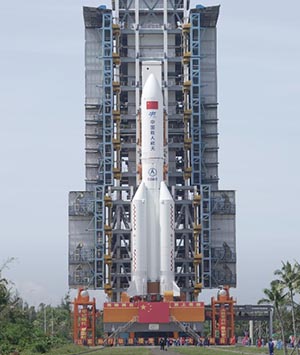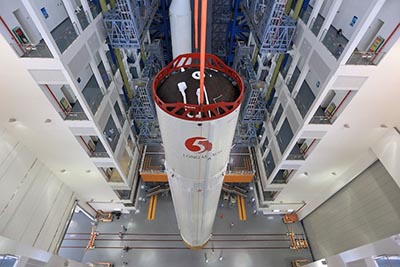 |
||||||
|
||||||
|
|||||||
|
|||||||
| Long March 5 |
|||||||
The Long March 5 is the biggest and most powerful rocket of the Chinese Series of Long March rockets. Based on its Chinese name, 长征 cháng zhēng, the Long March 5 is also designated CZ-5.
It was developed by the China Academy of Launch Vehicle Technology (CALT) and is operated by the China Aerospace Science and Technology Corporation (CASC).
|
|||||||
|
|||||||
The rocket is 57 meters tall and the main body without booster rockets is 5 meters in diameter. It may lift up to 14000 kg to geosynchronous orbit. There are two versions of the Long March 5: The Long March 5 has two stages, while the Long March 5B has only one stage and a higher payload.
|
|||||||
|
|||||||
| The Long March 5 was first launched in November 2016, delivering a large new communications satellite into orbit. The second launch failed, after which no further launches were made for 900 days in order to find the problem. The YF-77 engine’s turbo pumps were isolated and the problem fixed. In subsequent launches the problem did not reoccur.
The Long March 5 is the backbone of major Chinese space missions. It carried the spacecraft for the Tianwen 1 Mars mission and the Chang'e 5 lunar lander into space. The Long March 5B was specifically designed to launch the modules for China’s Tiangong space station into orbit. |
|||||||
|
|||||||
| wingspan: 21.65m height: 56.97m diameter: 5m empty weight: 851,800kg payload to low earth orbit: 25,000kg | |||||||
| return to top |



